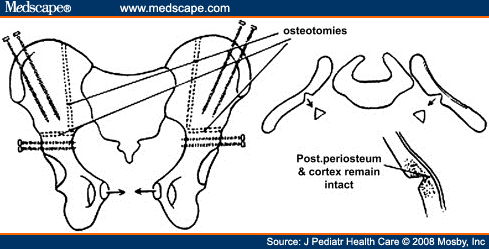Chemotherapy is widely believed to be the best first-line treatment for many patients with early-stage and low-volume, node-positive testicular cancer (TC). When evaluating population-based data, chemotherapy offers the highest chance of cure with a single modality to the most patients. For instance, the SWENOTECA experience indicates that a single dose of BEP (Bleomycin, Etoposide and Cisplatinum) chemotherapy cures >97% of men with Stage I NSGCT (non-seminomatous germ cell tumors).[1] For men with metastatic seminoma, chemotherapy can cure upwards of 90% of men.[2] Chemotherapy is not without a cost, most men experience some short-term side effects and some will experience long-term side effects. A prior blog briefly discusses short- and long-term effects of chemotherapy (http://bradyurology.blogspot.com/2014/03/stage-1-testis-cancer-recommendations.html). The long-term side effects are especially important for the TC population – which is, in general, young, fertile and healthy with a long life expectancy. The first dose of modern, curative chemotherapy for TC was given in the mid-1970's (http://bradyurology.blogspot.com/2014/08/classic-manuscript-in-urology-einhorn.html) – so we are just beginning to understand the long-term side effects form these medications.
This series of blogs will focus on the current data and understanding and long-term risks of chemotherapy in the TC population.
SECONDARY MALIGNANCIES
Studies examining patients from the 1940's to the present time indicate that any patient diagnosed with TC is at a higher lifetime risk of developing a second malignancy. This is likely related to improved long-term surveillance (compared to the rest of the population), and perhaps related to the underlying biological mechanisms that allowed TC to blossom. However, patients who received radiation treatment (RT) and chemotherapy are at the highest risk of secondary malignancy as they age.Solid Malignancies
A study of >40k men in 14 population-based tumor registries across Europe and North America, demonstrated a risk of secondary, solid malignancy of 31-36% for patients with seminoma or NSGCT – compared to 23% for the general population. This study demonstrated increased risks of cancer of the pleura (mesothelioma), lung, esophagus, bladder, colon, pancreas and stomach (nearly 60% of all cancers were of one of these types). The risk of 2nd cancer was higher for younger patients and persisted for at least 35 years following diagnosis. For radiotherapy and chemotherapy alone, the risk of 2nd malignancy was approximately 2-fold compared to the remainder of the population. If a patient received both RT and chemotherapy, the risk of 2nd malignancy was nearly 3-fold.[3] These results were corroborated by a number of large, population-based studies.[4,5] A US-based study, looking at a more contemporary time period, found that the risk of 2nd solid malignancy was 50% higher in patients receiving chemotherapy rather than surgery for NSGCT. There was an increased risk of kidney, thyroid, and soft tissue cancers from 12 to 20 years following chemotherapy.Hematologic Malignancies
The risk of hematologic malignancies (leukemia, lymphoma) has been reported to be 2 to 37-fold higher in patients receiving chemotherapy for TC.[4,6] The risk of hematologic 2nd malignancy may be related to dose and regimen: high cumulative doses of etoposide given over a short period of time appear to be less leukemogenic that similar doses given over a longer period of time.[6] For standard dose cisplatinum (650mg), the risk of leukemia is approximately 3-fold – and increased to 6-fold with higher doses of platinum-based chemotherapy.[7]In general, the risks of 2nd cancers should be tempered – part of the reason for the high relative risks is that cancers, in general, are relatively rare in a young population. Therefore, even a small absolute increased risk of cancer can lead to a high relative risk of cancer. For instance, while the risk of leukemia after cisplatinum-based chemotherapy is 3-fold higher than the normal population, this only translates into 16 cases of leukemia in 10,000 patients.[7]
Stay tuned for discussions of cardiovascular toxicity, gonadotoxicity and fertility, neurotoxicities and quality of life.
Phillip M. Pierorazio, MD is the Director of the Division of Testicular Cancer at the Brady Urological Institute at Johns Hopkins.
Hopkins Testicular Cancer Websites:
Johns Hopkins Testis Cancer: http://urology.jhu.edu/testis/cancer.php
Testis Cancer Survivors: https://www.facebook.com/testiscancersurvivor
[1] Cohn-Cedermark G1, Stahl O, Tandstad T; SWENOTECA. Surveillance vs. adjuvant therapy of clinical stage I testicular tumors - a review and the SWENOTECA experience. Andrology. 2014 Oct 1. doi: 10.1111/andr.280. [Epub ahead of print]
[2] D. Gholam, K. Fizazi, M.J. Terrier-Lacombe, et al. Advanced seminoma–treatment results and prognostic factors for survival after first-line, cisplatin-based chemotherapy and for patients with recurrent disease: a single-institution experience in 145 patients. Cancer, 98 (2003), p. 745.
[3] Travis LB, Fosså SD, Schonfeld SJ, McMaster ML, Lynch CF, Storm H, Hall P, Holowaty E, Andersen A, Pukkala E, Andersson M, Kaijser M, Gospodarowicz M, Joensuu T, Cohen RJ, Boice JD Jr, Dores GM, Gilbert ES. Second cancers among 40,576 testicular cancer patients: focus on long-term survivors. J Natl Cancer Inst. 2005 Sep 21;97(18):1354-65.
[4] Richiardi L, Scélo G, Boffetta P, Hemminki K, Pukkala E, Olsen JH, Weiderpass E, Tracey E, Brewster DH, McBride ML, Kliewer EV, Tonita JM, Pompe-Kirn V, Kee-Seng C, Jonasson JG, Martos C, Brennan P. Second malignancies among survivors of germ-cell testicular cancer: a pooled analysis between 13 cancer registries. Int J Cancer. 2007 Feb 1;120(3):623-31.
[5] van den Belt-Dusebout AW, de Wit R, Gietema JA, Horenblas S, Louwman MW, Ribot JG, Hoekstra HJ, Ouwens GM, Aleman BM, van Leeuwen FE. Treatment-specific risks of second malignancies and cardiovascular disease in 5-year survivors of testicular cancer. J Clin Oncol. 2007 Oct 1;25(28):4370-8.
[6] Kollmannsberger C, Hartmann JT, Kanz L, et al. Therapy-related malignancies following treatment of germ cell cancer. Int J Cancer 1999;83(6):860-863.
[7] Travis LB, Andersson M, Gospodarowicz M, et al. Treatment-associated leukemia following testicular cancer. J Natl Cancer Inst 2000;92(14):1165-1171.

























